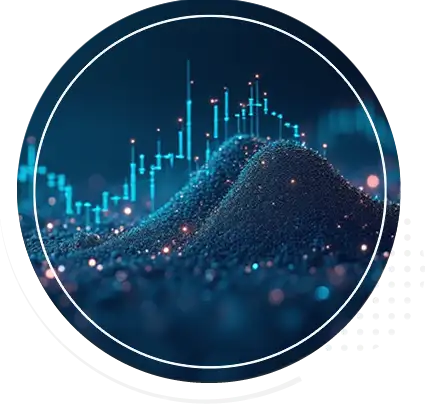We’re about 10 years past marketing automation’s advent, so most business leaders are familiar with the ROI to be gained in automating top- and mid-funnel marketing touchpoints. But while 40-50% of companies have invested in an automation platform,1 a staggering 85% percent of B2B organizations report not using their platform to its full potential.2
The propensity for underutilization starts even before purchasing an automation tool for your business. I recently met with an old colleague who confided that the B2B tech start-up he works for was trying to address their lead generation pipeline problem, and they had identified “marketing automation” as the solution. So I started to ask questions about their marketing maturity and process. Almost immediately red flags popped up, and it became clear that they weren’t ready to launch into the RFP process to select a marketing automation vendor.
“Slow down” or “not yet” are often unpopular phrases in business, but sometimes slowing down and considering the business challenge more carefully is what is needed to avoid costly errors in selecting technology. I know first-hand as a marketer how easy it is to geek-out on improved visibility and reduction in tedious tasks promised by marketing automation. I was a beta customer power user for Hubspot in their infancy. I trained our marketing programs team on Eloqua. I love the closed-loop insights and enhanced productivity the technology provides, but I’ve also experienced that the effort to stand up and direct a marketing automation platform is often underestimated.

It is more complex than configuring a new system and pressing a button to start generating and nurturing leads. While that statement sounds patronizing, and most marketing leaders understand there’s more to it than that, almost every organization I’ve worked with has blind spots to areas of their marketing lifecycle that need further development. And a piece of new technology will not solve those gaps.
Put simply: Strategy and planning cannot be automated.
Before you make your marketing automation investment, consider what the technology will not solve for you:
- Knowing in detail who your ideal buyer is. And in more complicated sales cycles, who the influencers are. This requires research and auditing both internally and externally.
- Knowing what your audience responds to at various stages of decision making. Marketing automation can facilitate testing to understand this better, but the hypotheses of what tools/content to test require expertise and must be input into the system.
- Building the communications roadmap. What are the mini actions you want your lead to take before they’re ready for human contact from a sales team? What is your sales team telling you about the objections and education challenges they hear when they first get someone on the phone?
- Creating the content. Not just the emails and landing pages themselves, but the offers, tools, insights, demonstrations, validation, education, coaching, etc. that will build up to the ultimate action you want your audience to take. Additionally, you should plan to regularly reevaluate content to keep it fresh and relevant.
- Developing the content and workflows in the system. This is taking the entire plan that you currently have in place “manually” and enhancing it, personalizing the right content and touchpoints for the right type of lead.
Failure to document the insights and the rollout plan prior to investment means that all those amazing features you were pitched by the automation vendor cannot be realized for your organization. I’ve seen Fortune 1000-sized companies spend hundreds of thousands of dollars per year on their marketing automation tool to use it as a glorified email marketing system (and sometimes build WYSIWYG landing pages with forms).
The most underutilized marketing automation features are lead scoring and targeting communications (both email triggered and dynamic web content) based on web tracking.3 Lead scoring fails if you have only a generic understanding of your buyer. This should go beyond the most obvious industry and job title questions that can be added to a lead gen form. Looking at your top customers, retroactively piece together all the touchpoints and activities – both marketing and sales team activities – that occurred prior to sale. By measuring content consumption and interest indicators, you can tailor communications for the lead not just based on what they filled out in the form or clicked on in an email, but also based on where they go on your website as a returning visitor 2 weeks, 4 weeks, 6 weeks later. You can also be more judicious about when the lead is assigned to your sales team, which optimizes their time to be spent on leads that are more engaged and informed.
But neither of these features can be implemented and optimized without the human insights to craft the communications criteria. And paramount to the success of this entire venture is the content itself. The need for a constant stream of relevant, interesting, and persuasive content is one of the biggest roadblocks to a program’s success, as companies are often willing to invest in the tools, but not in the creative manpower.
The reality is that many organizations begin considering marketing automation when they feel their marketing team is overtaxed. Addressing these core considerations in-house requires even more time and headspace from an already overburdened marketing team. This is why 63% of companies outsource marketing automation strategy planning.4
Trellist’s full service capabilities from Consulting to Marketing and Branding to Digital and Enterprise Technology allow our teams to work as an extension of our clients to ask the right questions that will set them up for success, build the tactical plan aligned to real data and insights, and create workflows and content that will improve the marketing and sales funnel. If you want to learn more about our experience in marketing automation and content marketing, please contact my colleague Neil Dougherty to begin the conversation.
1https://azslide.com/demand-generation-adoption-survey_59aac2441723dd8b061f4f1a.html
2https://www.siriusdecisions.com/blog/eight-is-not-enough-increasing-adoption-of-marketing-automation-platforms
3http://customerexperiencematrix.blogspot.com/2013/10/which-b2b-marketing-automation-features.html
4http://ascend2.com/wp-content/uploads/2017/01/Ascend2-Marketing-Technology-Trends-Survey-Summary-Report-161011.pdf












